Reason to Believe 8
Chris Knepp
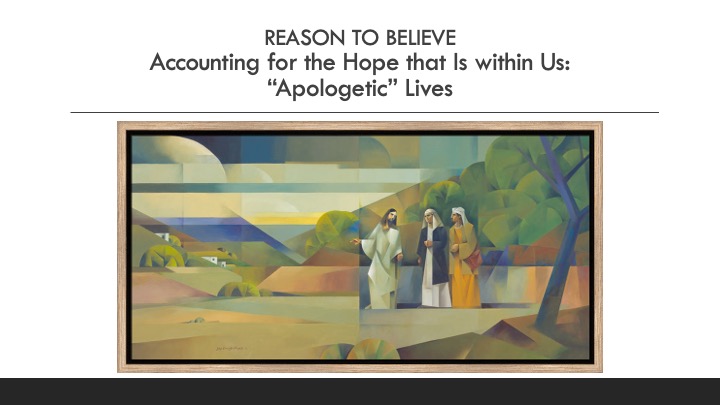
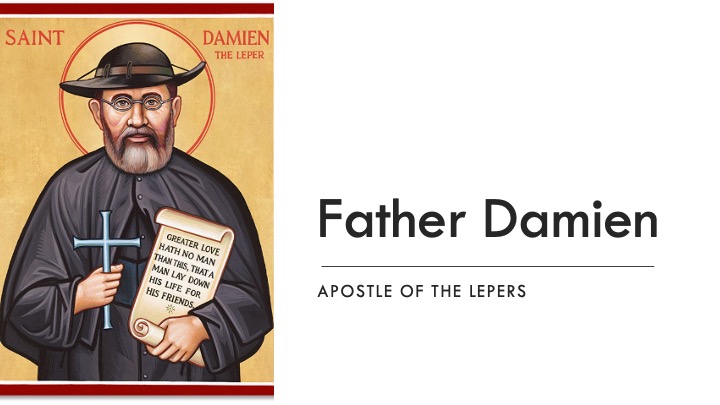

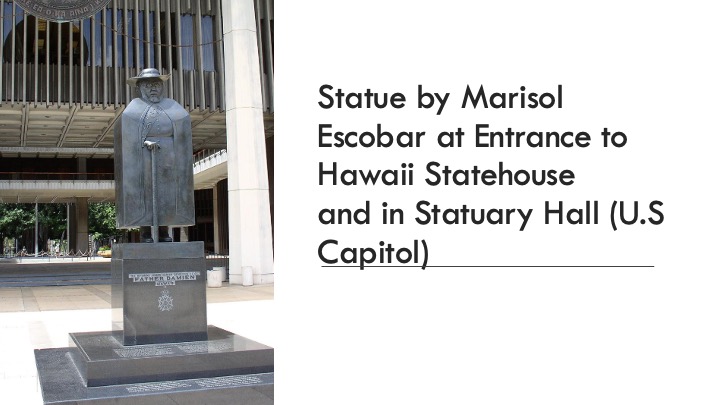
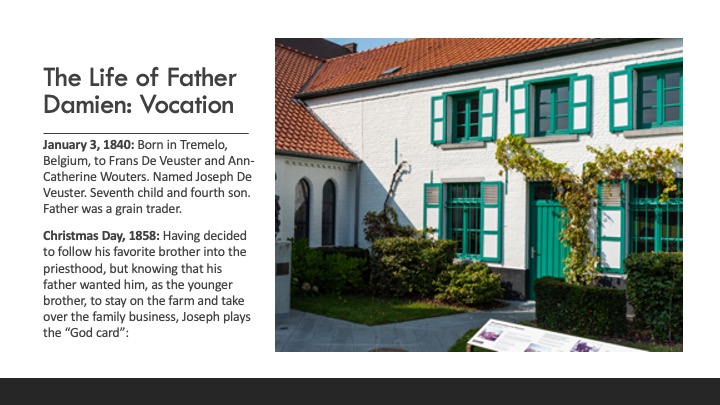
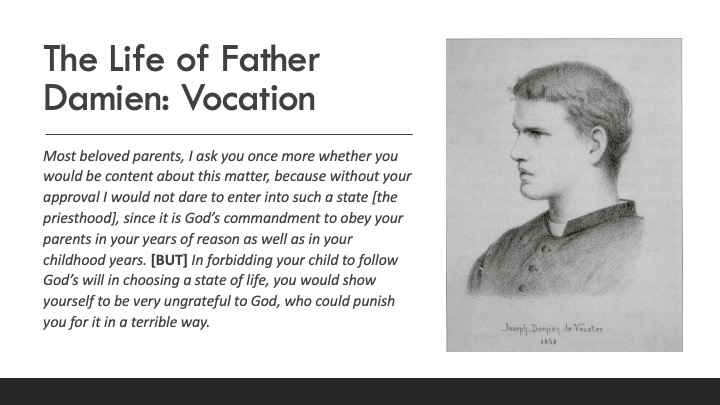
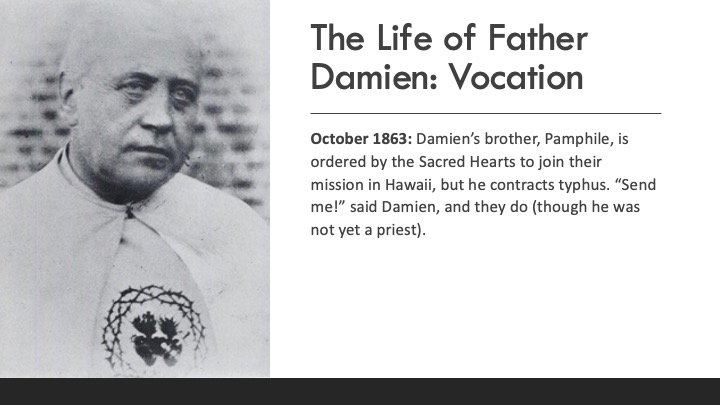
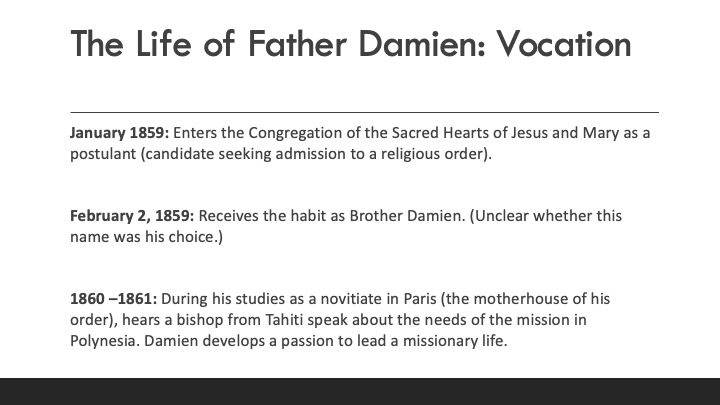
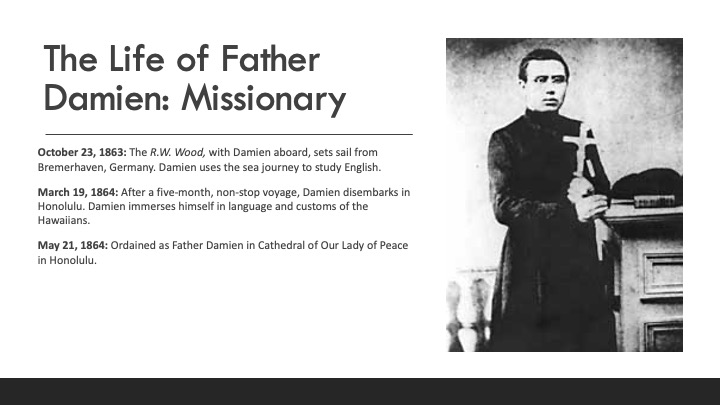
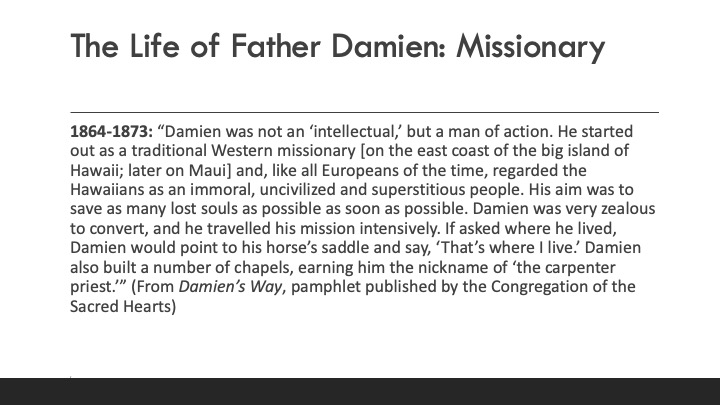
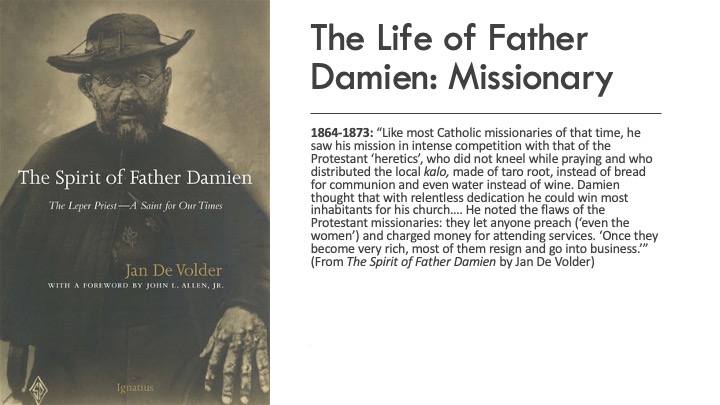
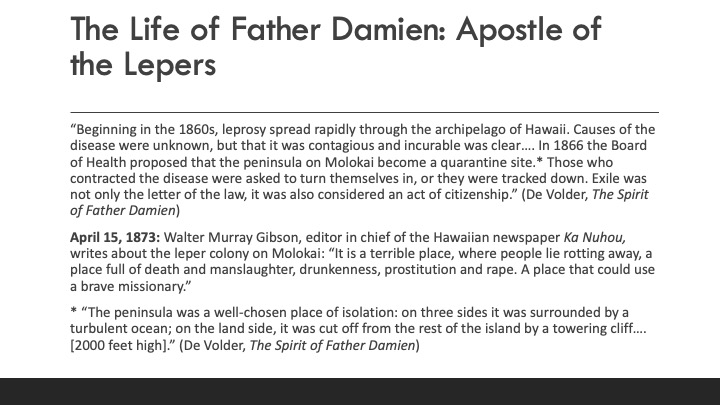
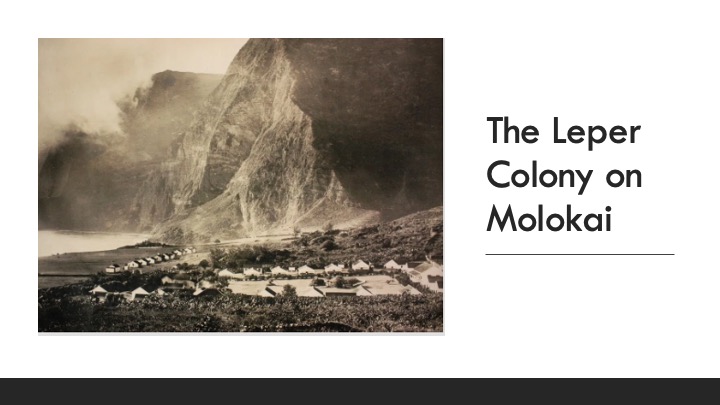
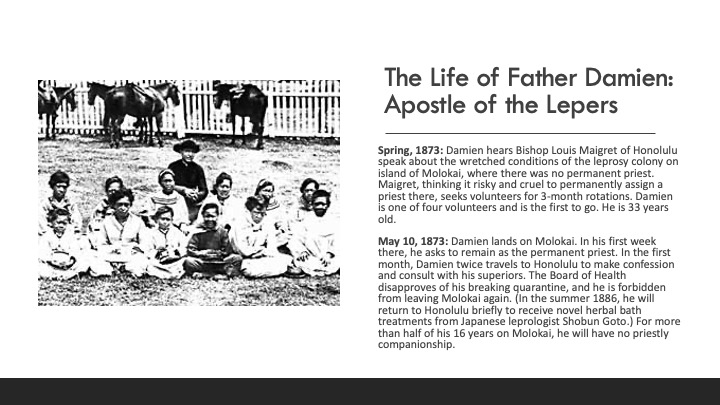
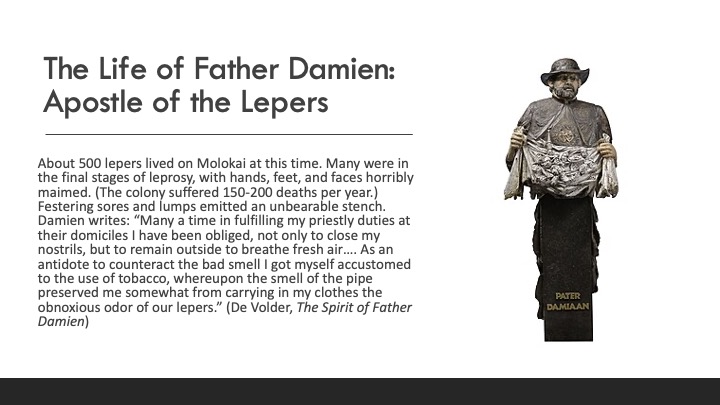
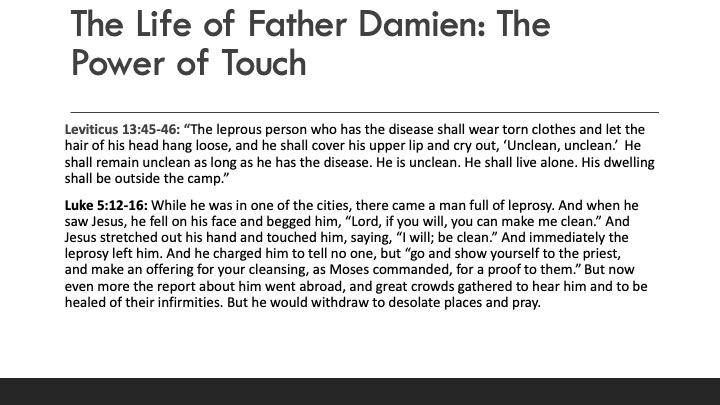

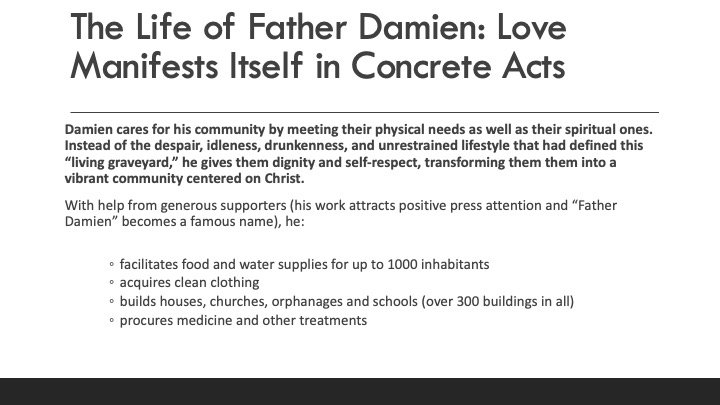
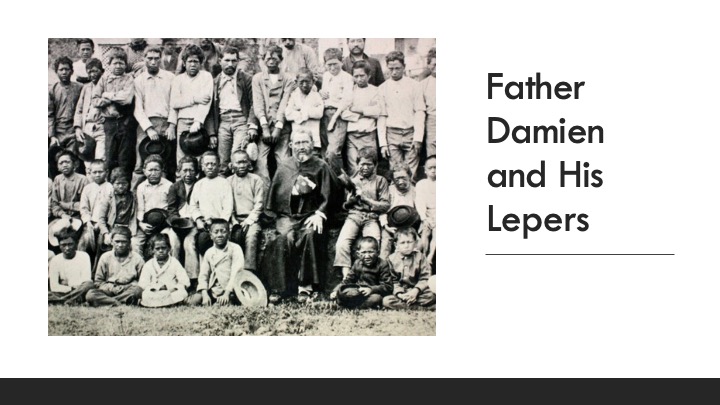
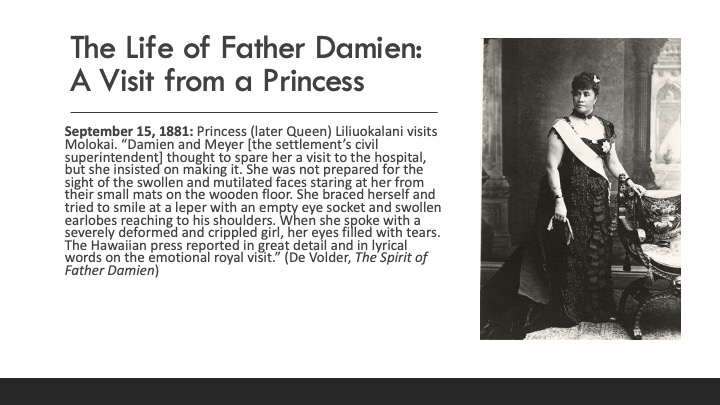
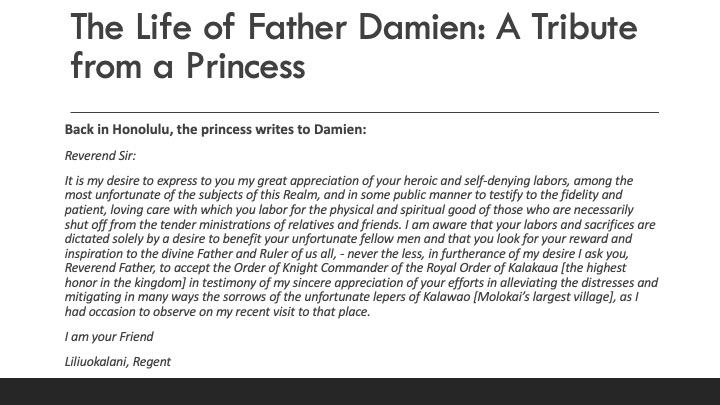
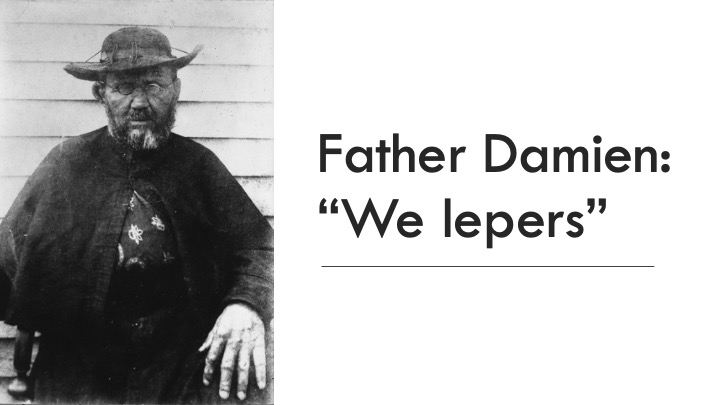
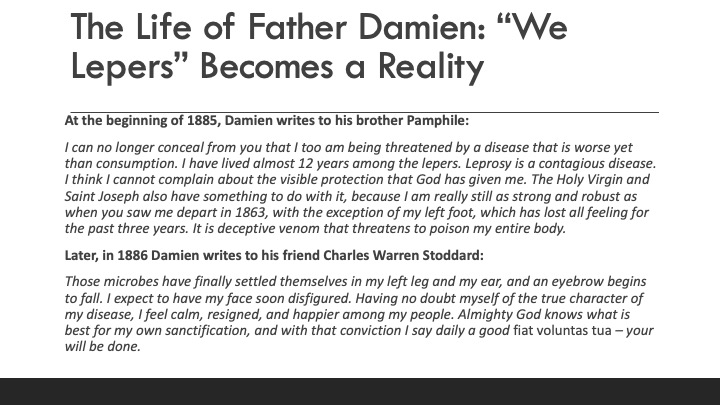
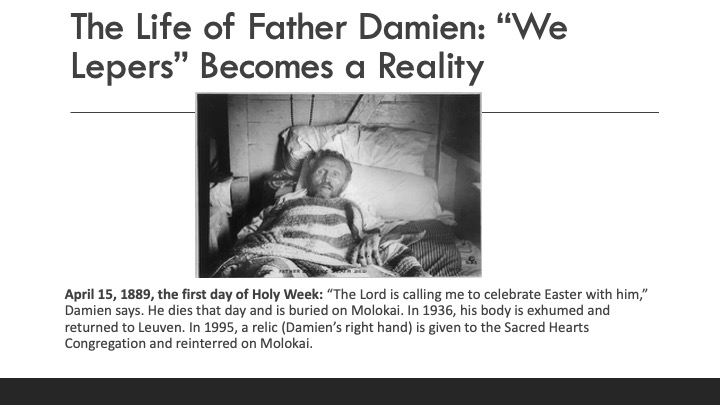
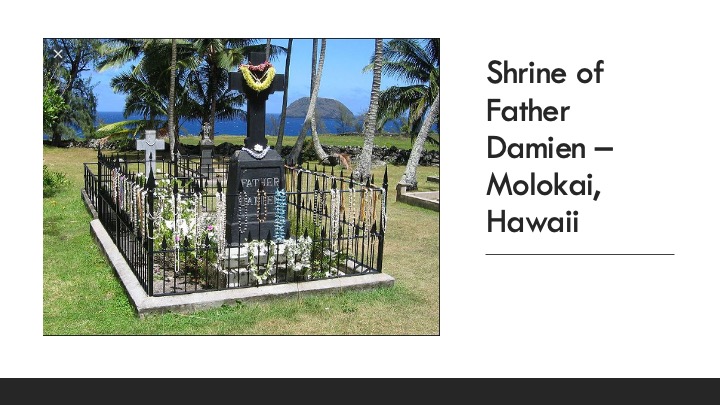

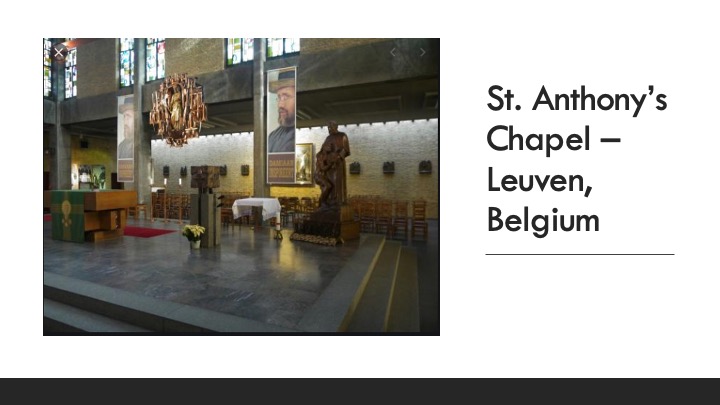
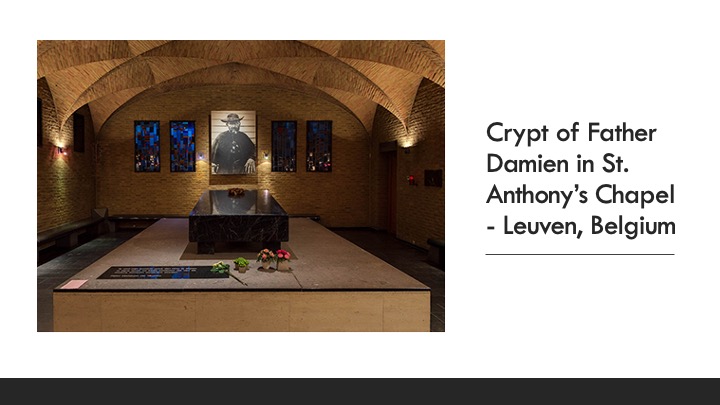
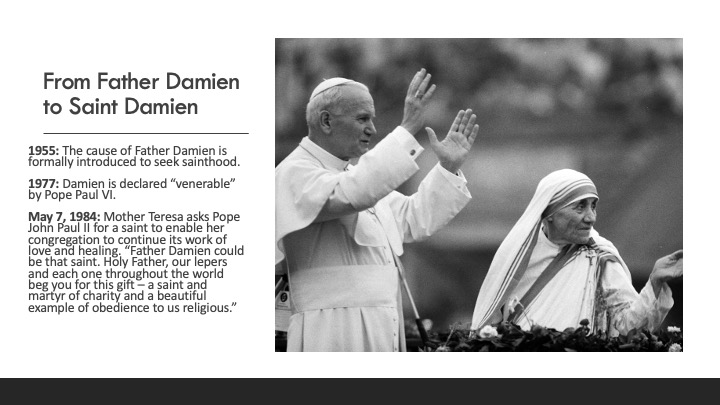
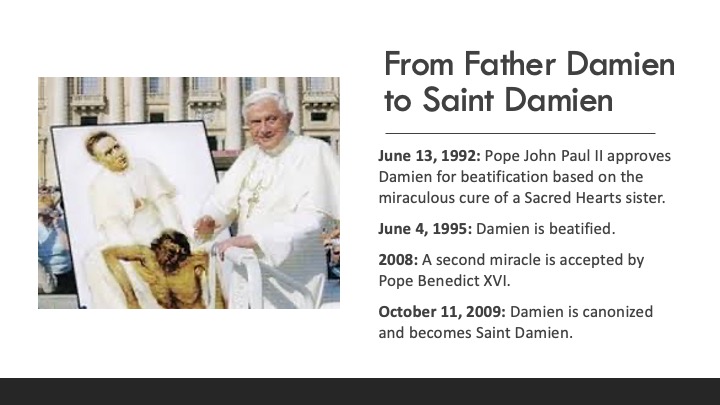
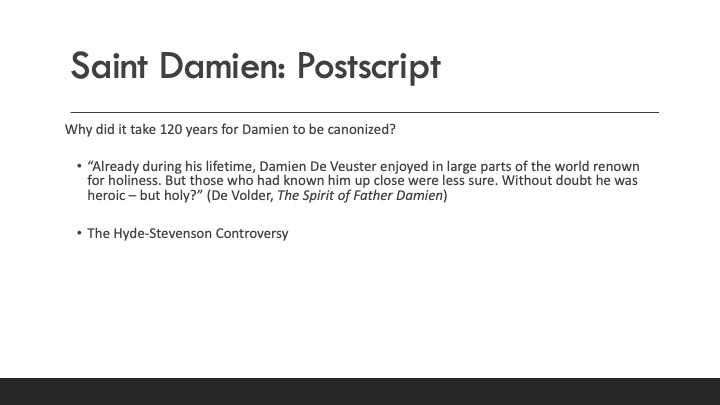
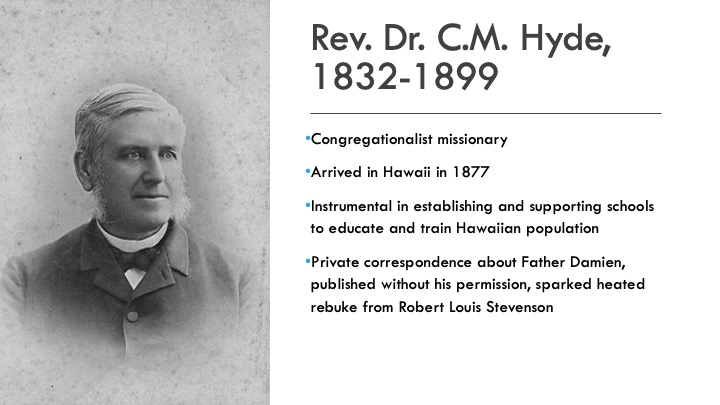
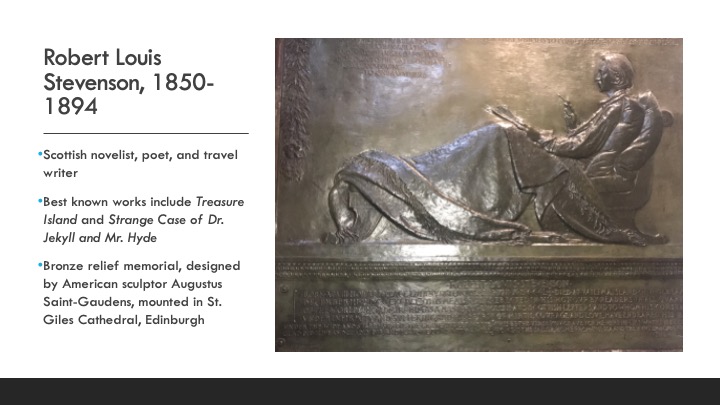
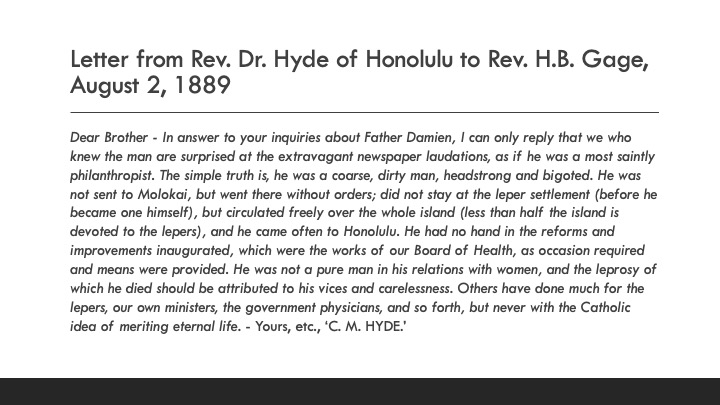
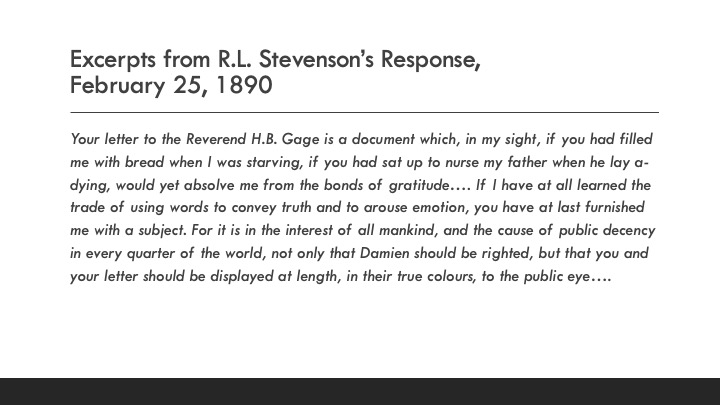
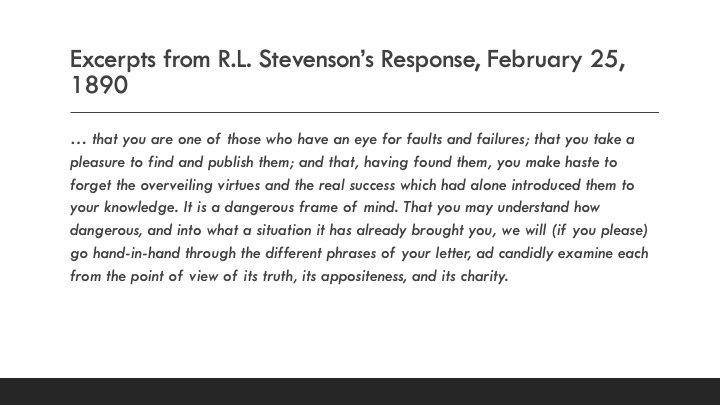
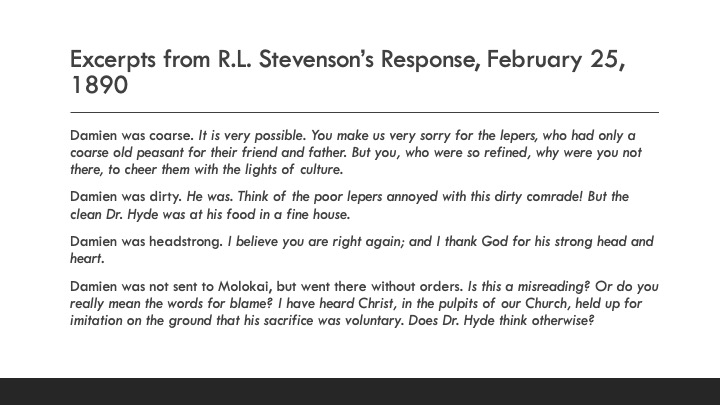
Reason to Believe 8
Links
< Home Page > < Reason to Believe Menu >
REASON TO BELIEVE 8 – the Text
Accounting for the Hope that Is within Us:
“Apologetic” Lives
Father Damien
Apostle of the Lepers
Father Damien: The Greatest Belgian
Statue by Marisol Escobar
at Entrance to Hawaii Statehouse
and in Statuary Hall (U.S Capitol)
The Life of Father Damien: Vocation
January 3, 1840: Born in Tremelo, Belgium, to Frans De Veuster and Ann-Catherine Wouters. Named Joseph De Veuster. Seventh child and fourth son. Father was a grain trader.
Christmas Day, 1858: Having decided to follow his favorite brother into the priesthood, but knowing that his father wanted him, as the younger brother, to stay on the farm and take over the family business, Joseph plays the “God card”:
Most beloved parents, I ask you once more whether you would be content about this matter, because without your approval I would not dare to enter into such a state [the priesthood], since it is God’s commandment to obey your parents in your years of reason as well as in your childhood years. [BUT] In forbidding your child to follow God’s will in choosing a state of life, you would show yourself to be very ungrateful to God, who could punish you for it in a terrible way.
January 1859: Enters the Congregation of the Sacred Hearts of Jesus and Mary as a postulant (candidate seeking admission to a religious order).
February 2, 1859: Receives the habit as Brother Damien. (Unclear whether this name was his choice.)
1860 –1861: During his studies as a novitiate in Paris (the motherhouse of his order), hears a bishop from Tahiti speak about the needs of the mission in Polynesia. Damien develops a passion to lead a missionary life.
October 1863: Damien’s brother, Pamphile, is ordered by the Sacred Hearts to join their mission in Hawaii, but he contracts typhus. “Send me!” said Damien, and they do (though he was not yet a priest).
The Life of Father Damien: Missionary
October 23, 1863: The R.W. Wood, with Damien aboard, sets sail from Bremerhaven, Germany. Damien uses the sea journey to study English.
March 19, 1864: After a five-month, non-stop voyage, Damien disembarks in Honolulu. Damien immerses himself in language and customs of the Hawaiians.
May 21, 1864: Ordained as Father Damien in Cathedral of Our Lady of Peace in Honolulu.
1864-1873: “Damien was not an ‘intellectual,’ but a man of action. He started out as a traditional Western missionary [on the east coast of the big island of Hawaii; later on Maui] and, like all Europeans of the time, regarded the Hawaiians as an immoral, uncivilized and superstitious people. His aim was to save as many lost souls as possible as soon as possible. Damien was very zealous to convert, and he travelled his mission intensively. If asked where he lived, Damien would point to his horse’s saddle and say, ‘That’s where I live.’ Damien also built a number of chapels, earning him the nickname of ‘the carpenter priest.’” (From Damien’s Way, pamphlet published by the Congregation of the Sacred Hearts)
1864-1873: “Like most Catholic missionaries of that time, he saw his mission in intense competition with that of the Protestant ‘heretics’, who did not kneel while praying and who distributed the local kalo, made of taro root, instead of bread for communion and even water instead of wine. Damien thought that with relentless dedication he could win most inhabitants for his church…. He noted the flaws of the Protestant missionaries: they let anyone preach (‘even the women’) and charged money for attending services. ‘Once they become very rich, most of them resign and go into business.’” (From The Spirit of Father Damien by Jan De Volder)
The Life of Father Damien: Apostle of the Lepers
“Beginning in the 1860s, leprosy spread rapidly through the archipelago of Hawaii. Causes of the disease were unknown, but that it was contagious and incurable was clear…. In 1866 the Board of Health proposed that the peninsula on Molokai become a quarantine site.* Those who contracted the disease were asked to turn themselves in, or they were tracked down. Exile was not only the letter of the law, it was also considered an act of citizenship.” (De Volder, The Spirit of Father Damien)
April 15, 1873: Walter Murray Gibson, editor in chief of the Hawaiian newspaper Ka Nuhou, writes about the leper colony on Molokai: “It is a terrible place, where people lie rotting away, a place full of death and manslaughter, drunkenness, prostitution and rape. A place that could use a brave missionary.”
* “The peninsula was a well-chosen place of isolation: on three sides it was surrounded by a turbulent ocean; on the land side, it was cut off from the rest of the island by a towering cliff…. [2000 feet high].” (De Volder, The Spirit of Father Damien)
,
The Leper Colony on Molokai
Spring, 1873: Damien hears Bishop Louis Maigret of Honolulu speak about the wretched conditions of the leprosy colony on island of Molokai, where there was no permanent priest. Maigret, thinking it risky and cruel to permanently assign a priest there, seeks volunteers for 3-month rotations. Damien is one of four volunteers and is the first to go. He is 33 years old.
May 10, 1873: Damien lands on Molokai. In his first week there, he asks to remain as the permanent priest. In the first month, Damien twice travels to Honolulu to make confession and consult with his superiors. The Board of Health disapproves of his breaking quarantine, and he is forbidden from leaving Molokai again. (In the summer 1886, he will return to Honolulu briefly to receive novel herbal bath treatments from Japanese leprologist Shobun Goto.) For more than half of his 16 years on Molokai, he will have no priestly companionship.
About 500 lepers lived on Molokai at this time. Many were in the final stages of leprosy, with hands, feet, and faces horribly maimed. (The colony suffered 150-200 deaths per year.) Festering sores and lumps emitted an unbearable stench. Damien writes: “Many a time in fulfilling my priestly duties at their domiciles I have been obliged, not only to close my nostrils, but to remain outside to breathe fresh air…. As an antidote to counteract the bad smell I got myself accustomed to the use of tobacco, whereupon the smell of the pipe preserved me somewhat from carrying in my clothes the obnoxious odor of our lepers.” (De Volder, The Spirit of Father Damien)
Reason to Believe
The Life of Father Damien: The Power of Touch
Leviticus 13:45-46: “The leprous person who has the disease shall wear torn clothes and let the hair of his head hang loose, and he shall cover his upper lip and cry out, ‘Unclean, unclean.’ He shall remain unclean as long as he has the disease. He is unclean. He shall live alone. His dwelling shall be outside the camp.”
Luke 5:12-16: While he was in one of the cities, there came a man full of leprosy. And when he saw Jesus, he fell on his face and begged him, “Lord, if you will, you can make me clean.” And Jesus stretched out his hand and touched him, saying, “I will; be clean.” And immediately the leprosy left him. And he charged him to tell no one, but “go and show yourself to the priest, and make an offering for your cleansing, as Moses commanded, for a proof to them.” But now even more the report about him went abroad, and great crowds gathered to hear him and to be healed of their infirmities. But he would withdraw to desolate places and pray.
,Damien follows the example of Jesus. He touches the untouchable to baptize them, to give them communion, to administer the last sacraments to the dying, and to bury them. He embraces the sick, eats with them from the same pot, even shares his pipe with them. Long before he contracts leprosy, Damien speaks of “We lepers.”
In a letter to his superior general, Damien writes: “They are repugnant to look at, but they also have a soul redeemed at the price of the precious blood of our Divine Savior. He too in his divine love consoled lepers. If I cannot heal them, as he could, at least I can offer them comfort.”
The Life of Father Damien: Love Manifests Itself in Concrete Acts
Damien cares for his community by meeting their physical needs as well as their spiritual ones. Instead of the despair, idleness, drunkenness, and unrestrained lifestyle that had defined this “living graveyard,” he gives them dignity and self-respect, transforming them them into a vibrant community centered on Christ.
With help from generous supporters (his work attracts positive press attention and “Father Damien” becomes a famous name), he:
◦ facilitates food and water supplies for up to 1000 inhabitants
◦ acquires clean clothing
◦ builds houses, churches, orphanages and schools (over 300 buildings in all)
◦ procures medicine and other treatments
Father Damien and His Lepers
Reason to Believe
The Life of Father Damien: A Visit from a Princess
September 15, 1881: Princess (later Queen) Liliuokalani visits Molokai. “Damien and Meyer [the settlement’s civil superintendent] thought to spare her a visit to the hospital, but she insisted on making it. She was not prepared for the sight of the swollen and mutilated faces staring at her from their small mats on the wooden floor. She braced herself and tried to smile at a leper with an empty eye socket and swollen earlobes reaching to his shoulders. When she spoke with a severely deformed and crippled girl, her eyes filled with tears. The Hawaiian press reported in great detail and in lyrical words on the emotional royal visit.” (De Volder, The Spirit of Father Damien)
Reason to Believe
Back in Honolulu, the princess writes to Damien:
Reverend Sir:
It is my desire to express to you my great appreciation of your heroic and self-denying labors, among the most unfortunate of the subjects of this Realm, and in some public manner to testify to the fidelity and patient, loving care with which you labor for the physical and spiritual good of those who are necessarily shut off from the tender ministrations of relatives and friends. I am aware that your labors and sacrifices are dictated solely by a desire to benefit your unfortunate fellow men and that you look for your reward and inspiration to the divine Father and Ruler of us all, - never the less, in furtherance of my desire I ask you, Reverend Father, to accept the Order of Knight Commander of the Royal Order of Kalakaua [the highest honor in the kingdom] in testimony of my sincere appreciation of your efforts in alleviating the distresses and mitigating in many ways the sorrows of the unfortunate lepers of Kalawao [Molokai’s largest village], as I had occasion to observe on my recent visit to that place.
I am your Friend
Liliuokalani, Regent
Father Damien: “We lepers”
The Life of Father Damien: “We Lepers” Becomes a Reality
Reason to Believe
At the beginning of 1885, Damien writes to his brother Pamphile:
I can no longer conceal from you that I too am being threatened by a disease that is worse yet than consumption. I have lived almost 12 years among the lepers. Leprosy is a contagious disease. I think I cannot complain about the visible protection that God has given me. The Holy Virgin and Saint Joseph also have something to do with it, because I am really still as strong and robust as when you saw me depart in 1863, with the exception of my left foot, which has lost all feeling for the past three years. It is deceptive venom that threatens to poison my entire body.
Later, in 1886 Damien writes to his friend Charles Warren Stoddard:
Those microbes have finally settled themselves in my left leg and my ear, and an eyebrow begins to fall. I expect to have my face soon disfigured. Having no doubt myself of the true character of my disease, I feel calm, resigned, and happier among my people. Almighty God knows what is best for my own sanctification, and with that conviction I say daily a good fiat voluntas tua – your will be done.
April 15, 1889, the first day of Holy Week: “The Lord is calling me to celebrate Easter with him,” Damien says. He dies that day and is buried on Molokai. In 1936, his body is exhumed and returned to Leuven. In 1995, a relic (Damien’s right hand) is given to the Sacred Hearts Congregation and reinterred on Molokai.
Reason to Believe
From Father Damien to Saint Damien
1955: The cause of Father Damien is formally introduced to seek sainthood.
1977: Damien is declared “venerable” by Pope Paul VI.
May 7, 1984: Mother Teresa asks Pope John Paul II for a saint to enable her congregation to continue its work of love and healing. “Father Damien could be that saint. Holy Father, our lepers and each one throughout the world beg you for this gift – a saint and martyr of charity and a beautiful example of obedience to us religious.
June 13, 1992: Pope John Paul II approves Damien for beatification based on the miraculous cure of a Sacred Hearts sister.
June 4, 1995: Damien is beatified.
2008: A second miracle is accepted by Pope Benedict XVI.
Reason to Believe
October 11, 2009: Damien is canonized and becomes Saint Damien.
Saint Damien: Postscript
Why did it take 120 years for Damien to be canonized?
• “Already during his lifetime, Damien De Veuster enjoyed in large parts of the world renown for holiness. But those who had known him up close were less sure. Without doubt he was heroic – but holy?” (De Volder, The Spirit of Father Damien)
• The Hyde-Stevenson Controversy
Rev. Dr. C.M. Hyde, 1832-1899
• Congregationalist missionary
• Arrived in Hawaii in 1877
• Instrumental in establishing and supporting schools to educate and train Hawaiian population
• Private correspondence about Father Damien, published without his permission, sparked heated rebuke from Robert Louis Stevenson
Robert Louis Stevenson, 1850-1894
• Scottish novelist, poet, and travel writer
• Best known works include Treasure Island and Strange Case of Dr. Jekyll and Mr. Hyde
• Bronze relief memorial, designed by American sculptor Augustus Saint-Gaudens, mounted in St. Giles Cathedral, Edinburgh
Letter from Rev. Dr. Hyde of Honolulu to Rev. H.B. Gage, August 2, 1889
Dear Brother - In answer to your inquiries about Father Damien, I can only reply that we who knew the man are surprised at the extravagant newspaper laudations, as if he was a most saintly philanthropist. The simple truth is, he was a coarse, dirty man, headstrong and bigoted. He was not sent to Molokai, but went there without orders; did not stay at the leper settlement (before he became one himself), but circulated freely over the whole island (less than half the island is devoted to the lepers), and he came often to Honolulu. He had no hand in the reforms and improvements inaugurated, which were the works of our Board of Health, as occasion required and means were provided. He was not a pure man in his relations with women, and the leprosy of which he died should be attributed to his vices and carelessness. Others have done much for the lepers, our own ministers, the government physicians, and so forth, but never with the Catholic idea of meriting eternal life. - Yours, etc., ‘C. M. HYDE.’
Excerpts from R.L.
Stevenson’s Response,
February 25, 1890
Your letter to the Reverend H.B. Gage is a document which, in my sight, if you had filled me with bread when I was starving, if you had sat up to nurse my father when he lay a-dying, would yet absolve me from the bonds of gratitude…. If I have at all learned the trade of using words to convey truth and to arouse emotion, you have at last furnished me with a subject. For it is in the interest of all mankind, and the cause of public decency in every quarter of the world, not only that Damien should be righted, but that you and your letter should be displayed at length, in their true colours, to the public eye….
… that you are one of those who have an eye for faults and failures; that you take a pleasure to find and publish them; and that, having found them, you make haste to forget the overveiling virtues and the real success which had alone introduced them to your knowledge. It is a dangerous frame of mind. That you may understand how dangerous, and into what a situation it has already brought you, we will (if you please) go hand-in-hand through the different phrases of your letter, ad candidly examine each from the point of view of its truth, its appositeness, and its charity.
Damien was coarse. It is very possible. You make us very sorry for the lepers, who had only a coarse old peasant for their friend and father. But you, who were so refined, why were you not there, to cheer them with the lights of culture.
Damien was dirty. He was. Think of the poor lepers annoyed with this dirty comrade! But the clean Dr. Hyde was at his food in a fine house.
Damien was headstrong. I believe you are right again; and I thank God for his strong head and heart.
Damien was not sent to Molokai, but went there without orders. Is this a misreading? Or do you really mean the words for blame? I have heard Christ, in the pulpits of our Church, held up for imitation on the ground that his sacrifice was voluntary. Does Dr. Hyde think otherwise?